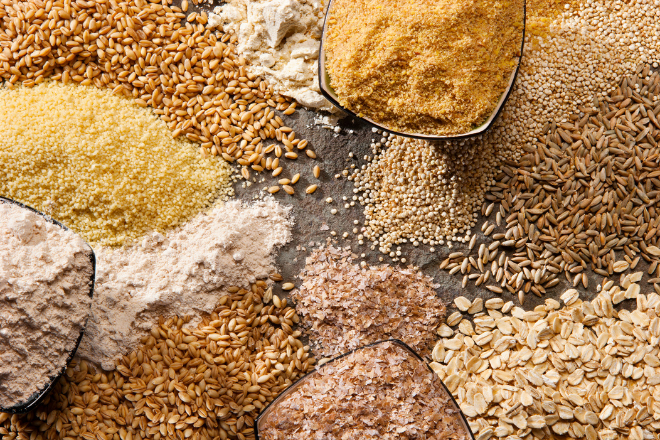Health
Ancient Grains: A Healthy Revolution in Cereal

\In recent years, the growing awareness of nutrition and wellness has brought ancient grains to the forefront of the health food movement, particularly in breakfast cereals. Known for their rich nutrient profiles, these time-honored grains offer a wholesome alternative to conventional cereal ingredients like corn and wheat. Ancient grains—such as quinoa, farro, spelt, amaranth, and millet—are now being incorporated into many breakfast cereals, celebrated for their health benefits and unique flavors.
What Are Ancient Grains?
Ancient grains refer to varieties of grains that have remained largely unchanged for thousands of years. Unlike modern, highly processed grains, these traditional staples are typically whole and retain more of their original nutrients. They originated in various parts of the world and were often staples in the diets of ancient civilizations. For instance, quinoa hails from South America, where the Incas considered it sacred, while farro and spelt were mainstays of the Roman Empire.
Nutritional Powerhouses
One of the major advantages of ancient grains in cereals is their impressive nutrient density. These grains are often rich in fiber, protein, vitamins, and minerals. For example, quinoa is a complete protein, meaning it contains all nine essential amino acids—a rare quality in plant-based foods. Amaranth and millet are packed with fiber, helping support digestive health, while farro and spelt offer a good source of iron, magnesium, and B vitamins, which are essential for energy production.
The fiber content of ancient grains is a key selling point for those looking to improve heart health and manage weight. High-fiber diets can help lower cholesterol levels and promote feelings of fullness, reducing overeating and aiding in weight control. Additionally, the complex carbohydrates in ancient grains provide a slow and steady release of energy, making them an ideal breakfast option for sustained energy throughout the day.
Gluten-Free Options
For individuals with gluten sensitivities or celiac disease, many ancient grains, such as quinoa, amaranth, and millet, are naturally gluten-free. This opens up a world of possibilities for those seeking gluten-free cereals without sacrificing taste or nutritional value. However, it’s essential to note that not all ancient grains are gluten-free—spelt and farro, for example, do contain gluten.
A Taste of Tradition
Ancient grains are also prized for their distinct flavors and textures, which offer a refreshing change from the often overly processed taste of conventional cereals. Quinoa adds a subtle nuttiness, while farro and spelt offer a chewy, hearty texture. These grains can be blended with other whole ingredients like nuts, seeds, and dried fruits to create a satisfying and delicious cereal mix.
Moreover, ancient grains are less likely to be genetically modified, as their cultivation has remained largely traditional. For consumers who prioritize organic or non-GMO products, cereals made from ancient grains align with these values.
The Environmental Case for Ancient Grains
Beyond their nutritional value, ancient grains are often considered more sustainable to grow. Many varieties require less water and can thrive in harsher climates, making them environmentally friendly alternatives to modern, resource-intensive crops like corn and rice. Their resilience to changing weather patterns and lower environmental footprint make them a smart choice for eco-conscious consumers.
Ancient Grains in Your Morning Bowl
Finding cereals with ancient grains is easier than ever, as more brands embrace these wholesome ingredients. Whether you prefer hot porridge-style cereals or crunchy, ready-to-eat varieties, there is a growing selection of ancient grain cereals available. Some cereals feature one primary grain, while others blend multiple varieties to combine their nutritional benefits and flavors.
For a DIY approach, you can even create your own cereal blend at home by combining cooked ancient grains with nuts, seeds, and fruits, topped with a splash of milk or yogurt. This not only offers greater control over the ingredients but also ensures that you’re consuming a minimally processed, nutrient-rich breakfast.
Conclusion
Ancient grains are transforming breakfast cereals, offering a nutritious, flavorful, and environmentally sustainable option for health-conscious individuals. Whether you’re seeking more protein, fiber, or simply a satisfying crunch, cereals made with these time-tested grains provide a perfect start to the day. In an era where people are increasingly turning back to whole foods and traditional methods of eating, ancient grains are reclaiming their place as a vital part of a balanced diet. The next time you reach for a box of cereal, consider choosing one packed with the wisdom and nutrition of ancient grains.
